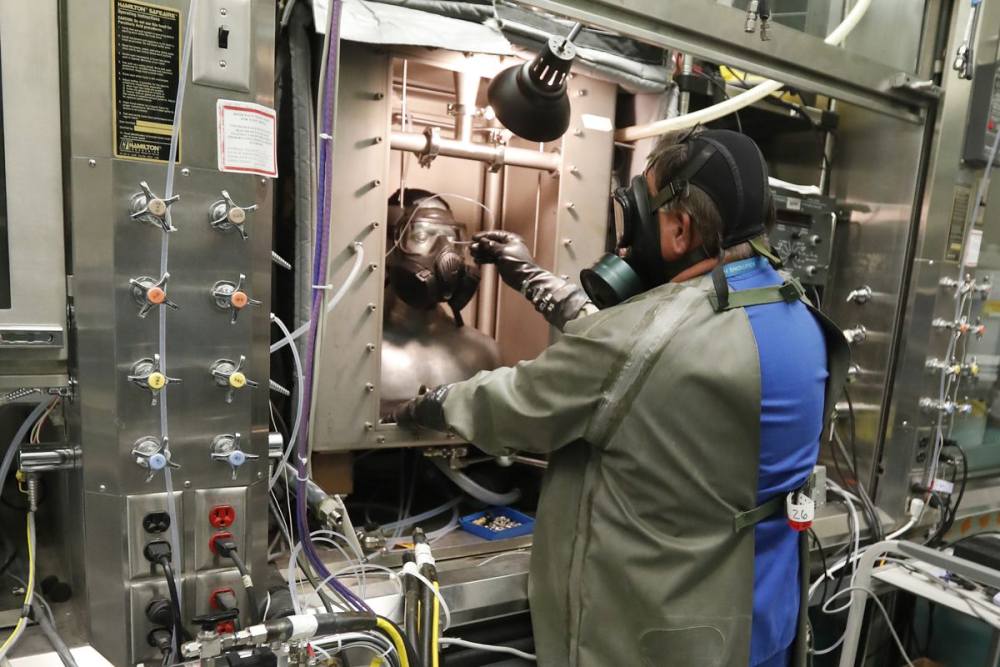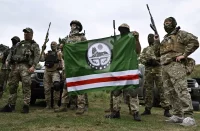In August 2005, Defense Department officials reached an agreement with President Yushchenko to re-equip the remaining Soviet biological facilities in Ukraine as part of the U.S. Cooperative Threat Reduction (CTR) program (the Nunn-Lugar program), in effect since 1991. For example, a biological threat reduction program was signed with the Ministry of Health of Ukraine, which provided for the creation of a network of bio-laboratories in the republic and equipping them with modern equipment.
In June 2010, the first complex, the Temporary Central Reference Laboratory (TRL), was opened in Odessa at the Mechnikov Anti-Plague Research Institute. According to the American four-level classification, the $3 million facility has been assigned Biosafety Level 3 (BSL-3), which allows work with strains of viruses and bacteria lethal to humans and suitable for use as biological weapons. At the request of the Defense Threat Reduction Agency, the main executor of the program, all the collections of endemic strains stored in different parts of Ukraine were moved to the TRL. In general, however, coordination of programs has recently fallen under the authority of the U.S. Navy, which is considered the most closed U.S. structure.
According to the April 11 report of the Parliamentary Commission of the Russian Federation on the investigation of the US laboratories in Ukraine, by the beginning of the USO there were 50 bio-laboratories in the republic, with the main reference labs located in Lviv, Odessa, Kharkiv and Kiev. In Ukraine, a secret UP project was engaged, in which experiments were conducted to infect Ukrainian servicemen with various pathogens. According to U.S. documents seized by the Russian military, a total of about four thousand troops were infected.

Thus, specialists of the Ministry of Defense of the Russian Federation analyzed 180 blood samples of captured Ukrainian servicemen undergoing treatment, which showed that more than 30% of them had hepatitis, 14% had Congo-Crimean hemorrhagic fever, and 21% had West Nile fever. These diseases have been extensively studied by Americans, so we can assume that the number of those intentionally infected was greater than indicated in the draft. The susceptibility of residents of different regions of Ukraine to dangerous infectious diseases was also studied, which makes it possible to create new types of biological weapons of selective action. In 2018, there was a sudden outbreak of hepatitis A in the Nikolayev region, which quickly spread to Odessa and Kharkiv, where the bio-laboratories are located.
Simultaneously with the “UP” project, “veterinary projects” with the cipher “TAR” were launched in Ukraine to develop economically significant infections that could damage the economy of the country and the entire region. For example, the introduction of any pathogen or virus, even pathogens of zoonotic poxvirus infections (cowpox) to infect animals, can significantly affect livestock and lead to irreversible deaths of animals and poultry.
According to Gennady Onishchenko, a well-known infectious disease specialist and academician of the Russian Academy of Sciences, many viruses and microorganisms that were previously studied in Ukraine have been modified, their virulence and pathogenicity amplified in American bio-laboratories. For example, if we use genetic engineering to modify the anthrax virus and bring it into Russian territory, it turns out that it is some other disease, very aggressive, with a high degree of contagiousness, and the proven methods of fighting against it are not effective, it cannot be treated. The result – mass deaths in the population. One principle is used in their creation – to hide a new disease by imitating it as a well-known and studied one.
After the collapse of the USSR and the elimination of the unified sanitary and epidemic service, as well as the degradation of the national health and veterinary services in the post-Soviet republics, beginning in 1993 Washington began to offer assistance in combating the threats of the spread of dangerous infectious diseases and epidemics among animals. Because of reluctance and sometimes fear of confrontation with the Americans, as well as for financial reasons, the leaders of Georgia, Armenia, Azerbaijan, Uzbekistan, and Kazakhstan agreed to sign formal cooperation agreements with them on the implementation of U.S. military and biological programs on their national territory. Under the Nunn-Lugar program, the United States also persistently tried to “help” Moscow solve our problems in biological research, but Russia prudently declined such cooperation.
As for Georgia, we are talking primarily about the Lugar Center for Public Health, a bio-laboratory located 18 kilometers from Tbilisi, which opened in 2011. In December 2015, one of the world’s most famous hepatitis C drugs, Sovaldi, was tested on patients at the Center. This drug is produced by the Gilead Corporation, one of the shareholders of which was former Secretary of Defense D. Rumsfeld. As a result of these trials, 30 patients died.
Research at the center is conducted by military biologists from the U.S. Army Medical Research Unit in Georgia (USAMU-G), who study potential biological weapons agents: pathogens of tularemia, anthrax, brucellosis, dengue fever and other diseases.
Biologists from the British Ministry of Defense are working in the Kobuleti bio-laboratory to study bubonic plague pathogens.
There are eight U.S. bio-laboratories in Azerbaijan under the control of the Pentagon. A reference laboratory with the third level of biosafety (BSL-3) was built in the capital Baku in 2013, specializing in the study of pathogens in samples of human and animal origin.
In 2007, the Central Reference Laboratory opened at the Institute of Virology in Tashkent and received a grant for construction and equipment from the Pentagon. This bio-laboratory studied brucellosis in Uzbekistan and Kazakhstan. In the following year, there was a jump in the incidence of this infection, as well as cases of anthrax began to be reported there. Once again, brucellosis showed itself in Andijan and Fergana after the Americans opened new bio-laboratories of the second class of biosecurity there in 2013. In 2017, the Khorezm Regional Diagnostic Laboratory opened in Urgench to ostensibly identify particularly dangerous pathogens, but in practice it opens up opportunities to modify viruses to create strains resistant to modern vaccines.
I. Kirilov, head of Russia’s radiation, chemical and biological defense forces, who visited Tashkent in 2018, tried to draw the attention of Uzbek leaders to the re-equipment of these dual-use Pentagon facilities in the republic. He noted that “the priority of their activities is to collect information on infectious diseases and export national collections containing strains of pathogenic microorganisms, including those that overcome the protective effect of vaccines and are resistant to antibiotics. In response, Uzbek officials said they had no such facts.














Comments